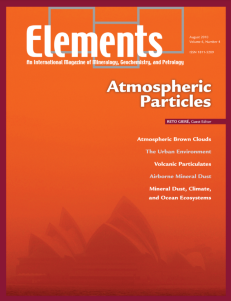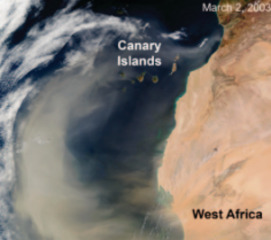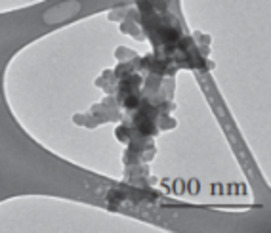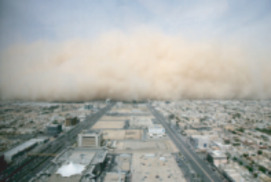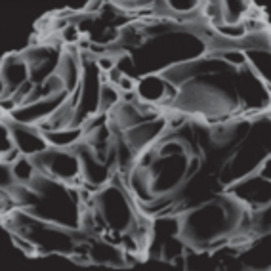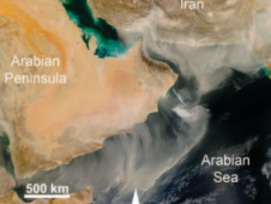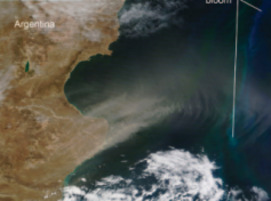
Atmospheric Particles
Reto Gieré – Guest Editors
Table of Contents
Solid atmospheric particles range in size from a few nanometers to several micrometers and are generated through both natural processes and human activity. Even though these par- ticles are derived from spatially limited source areas and typically become airborne during short-term events, they are ubiquitous globally due to atmospheric circulation. Depending on their physical and chemical properties, these solid aerosols have a major impact on the radiative properties of the atmosphere and gla- ciers, on cloud condensation, and on the chem- ical composition of oceans and soils. Because these particles affect transportation and human health, they have recently become the focus of government attention and regulation. This issue of Elements will explore the atmo- sphere as an exciting new research area for mineralogists and geochemists. It will illus- trate the most prominent types of atmospheric particles and discuss their key effects on cli- mate and ecosystems worldwide.
- Solid Particulate Matter in the Atmosphere
- Atmospheric Brown Clouds: From Local Air Pollution to Climate Change
- Airborne Particles in the Urban Environment
- Atmospheric and Environmental Impacts of Volcanic Particulates
- Airborne Mineral Dust
- Interactions between Mineral Dust, Climate, and Ocean Ecosystems
A2 Technologies
Australian Scientific Instruments (ASI)
Bruker
Dakota Matrix Minerals
Excalibur Mineral Corporation
ICAM 2011
Rigaku
RockWare
Savillex
Thermo Scientific
University of Freiburg
v6n5 Thermodynamics of Earth Systems
Guest editor: Pascal Richet, Grant S. Henderson, and Daniel R. Neuville
During the past decades, thermodynamics has become an essential tool for under- standing fundamental processes that have determined the structure and evolution of our planet. From the atmosphere to the ocean and sediments, from metamorphic terranes to magmatic provinces, the lower mantle, and the core, this issue of Elements will illustrate how a better understanding of the manner in which free energy depends on temperature, pressure, and chemical composition allows the Earth’s activity to be better deciphered. At a time when climate change has become a major concern, thermodynamic studies of the atmosphere and ocean have not only an academic interest, but also considerable practical importance.
- Thermodynamics: The Oldest Branch of Earth Sciences? Pascal Richet (IPGP-CNRS), Grant S. Henderson (Florida International University), and Daniel R. Neuville (Université Claude Bernard)
- Thermodynamic Processes in the Moist Atmosphere Andreas Bott (University of Bonn)
- Use of Thermodynamics in Examining the Effects of Ocean Acidification Frank J. Millero (University of Miami) and Benjamin R. DiTrolio (University of Miami)
- Water–Rock Interaction Processes Seen through Thermodynamics Pierpaolo Zuddas (Université Claude Bernard)
- Using Equilibrium Thermodynamics to Understand Metamorphism and Metamorphic Rocks Roger Powell (University of Melbourne) and Tim Holland (University of Cambridge)
- Thermodynamics of Phase Equilibria in Magma Pascal Richet (IPGP-CNRS) and Giulio Ottonello (Università di Genova)
- Thermodynamic Modeling of the Earth’s Interior Surendra K. Saxena (Florida International University)
- Mineral Evolution (February 2010)
- Sulfur (April 2010)
- Fluids in Metamorphism (June 2010)
- Atmospheric Particles (August 2010)
- Thermodynamics of Earth Systems (October 2010)
- Sustainable Remediation of Soil (December 2010)
Download 2010 Thematic Preview


